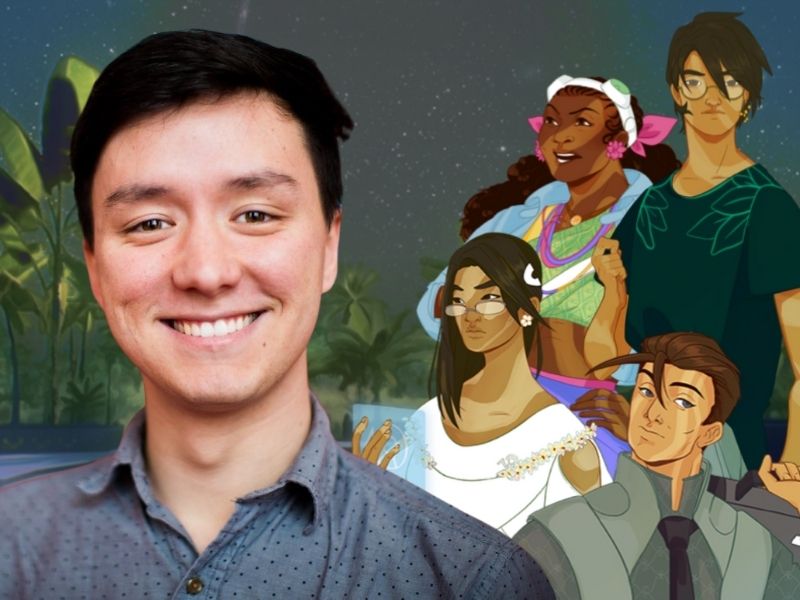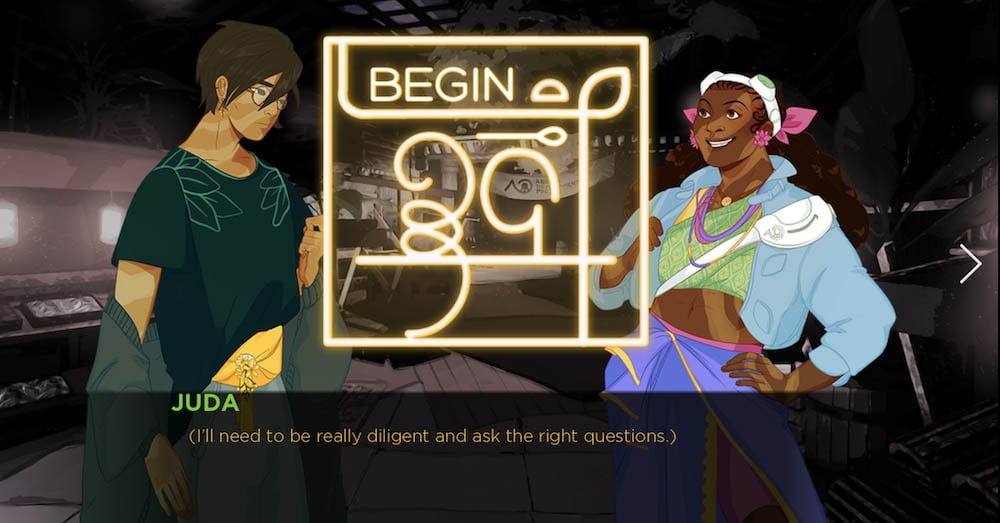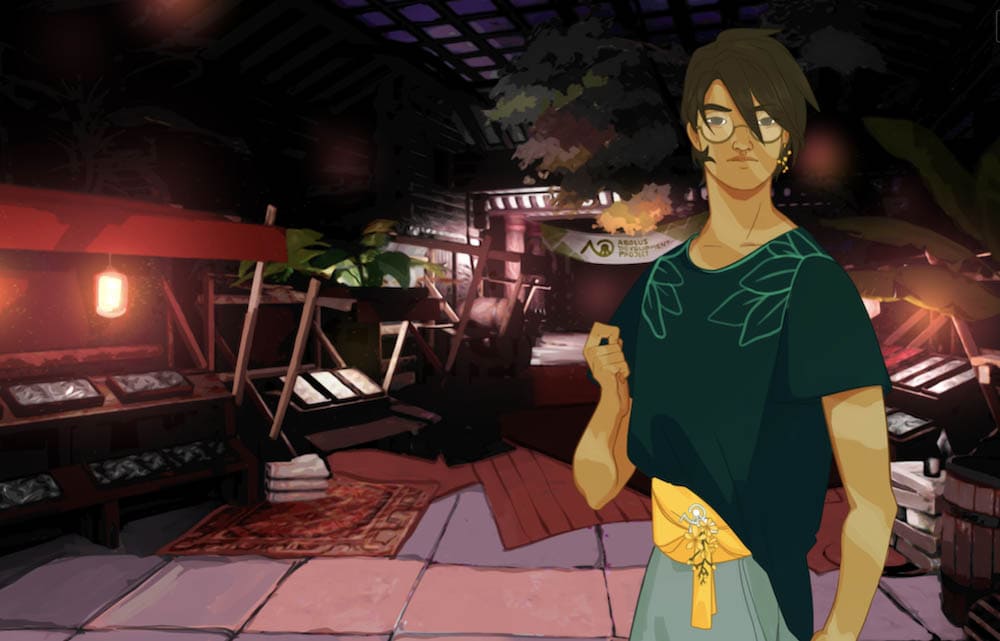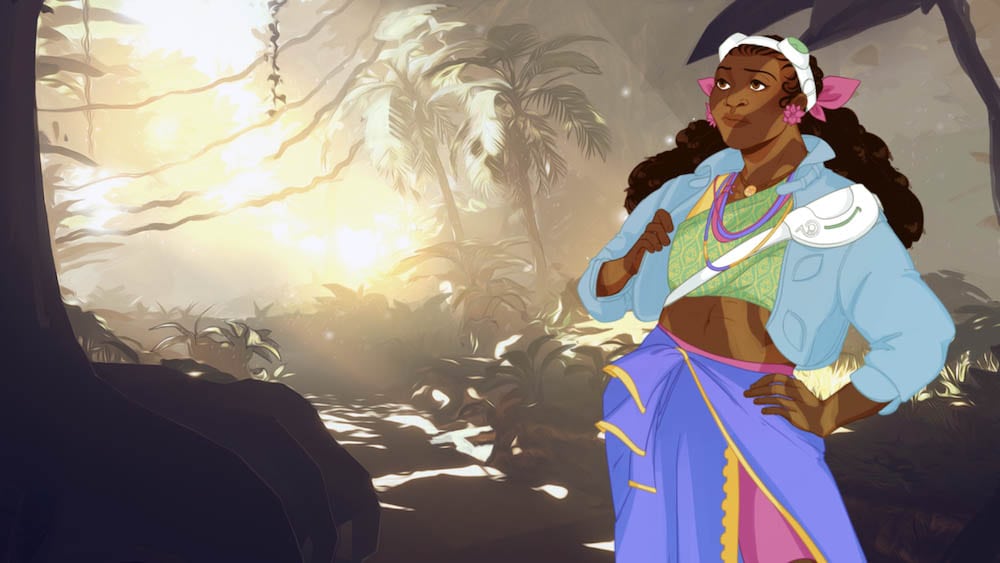4615 Theatre Company is an exciting local company dedicated to looking at storytelling through the ages, so it’s no surprise they found a unique concept to engage audiences in new ways during the pandemic: the interactive Dark City game. Set aside your traditional ideas about what constitutes theater and enjoy this “Choose Your Own Ending”–style murder-mystery game, refreshingly centered on stories of BIPOC protagonists. A diverse team of gifted artists combined their talents to create this epic four-episode series!
We had the honor of talking with one of the lead creators of Dark City, visionary artist and 4615 Producing Director Gregory Keng Strasser. Here’s what Greg had to say about the game.

How did you get the idea for Dark City?
Gregory Keng Strasser: Great question. There are two parts to this question: the inspiration and then drive to do the story.
First part, inspiration: I can’t remember what came first, but either I was living in Bangkok and had the fortune of traveling to Malaysia or I was down a YouTube hole about white-collar crimes. In this case, it’s regardless of chicken or egg, the seed of the idea was planted the moment I learned about the real-life infamous crime of 1MDB.
As to the second part, I think what really drove me to want to do a story about it was reading Dark Money by Jane Meyer and then doing mutual aid during the Black Lives Matter and Land Back movements. I wanted my art to be actively contributing to the benefit of my community: to tell a story about power being held to account, the thorniness that marginalized people must navigate in spaces of their oppressors, all set in a lush and solarpunk world.

Can you explain the story and objective of the game for readers?
A young man, Juda, is mourning the death of his sister, Paaya, who allegedly committed suicide. Juda is so grief-stricken he leaves the city that he and his sister had immigrated to, Aeolus, to return to his native home. One day, a journalist from an Indigenous-belt just outside of Aeolus, Liki, shows up at his apartment with evidence that something more sinister may have happened to Paaya — and even worse, something more sinister is happening at the company Juda’s sister worked for.
The objective is simple: figure out what happened to Paaya and what is going on at that shadowy company she was working for.
Tell us about your process of creating the game.
Oh god, I mean, I don’t even know if I can really explain it succinctly. Every project I do usually has a degree of learning or training, but you know I have never made a full video game before. I’ve dabbled, but nothing at this level. I knew that the biggest obstacle would be coding and finding an incredible artist partner to help create the world with me.
I will say, however, that my “process” wouldn’t have been possible without queer, femme, videogame makers like Anna Anthropy, Zoe Quinn, Mattie Brice, merritt kopas, and critic Anita Sarkeesian. These important gamemakers and writers created large swaths of literature all about the “DIY” game-making movement in an effort to make game-making more inclusive and accessible to queer, BIPOC people. It was through them I learned the basics of coding, of branching storytelling (Thank you ,Twine — another game-making platform I practiced in) and all the other tools I needed to make a game.
Otherwise, my approach to making the story was very similar to how I make a story for the stage or screen. I worked with Aria Velz, a dramaturg and co-writer on the project, to help craft the lore and storyline; with Sara [Eskandari] we helped bring the text into full vibrant and visual splendor. But even naming their responsibilities in such a way minimizes their true contributions. Everyone — Sara, Jordan [Friend], Aria, and myself — played a big role in this creation.
This project was a huge labor of love and a true test of collaboration: putting three theatermakers in a (virtual) room with a video game dev was an electrifying experience. Everyone was game, no pun intended, to try just about anything. We traded skills, educated each other compassionately, and supported one another through the highs and lows. It remains one of the most ideal processes I’ve ever had on a project!

How did you find that game design and producing a play are similar?
They’re really only similar insofar that both want to have robustly excellent dramaturgy with deep, thorough lore and well-curved character arcs.
I guess that the design phase is really similar to pre-production planning for a play. Obtaining all the research and then bringing the concept to actualization is as exciting as entering tech week and first preview for a show.
Otherwise, game dev is actually a much slower and meticulous process than rehearsing a play. It’s an endless amount of writing text, organizing files, making tiny edits, testing and troubleshooting. At least in rehearsal you have a living person chatting with you — when you code, you gotta do it all by yourself first, and only after it’s done can you bring in the collaborators to give their notes.
I noticed some voice actors in the game. Can you tell us about the actors you worked with, and how they developed characters in this form? Tell us about your directors, writers, and designers as well.
Niusha Nawab played Juda, Yesenia Iglesias played Paaya, Raven Lorraine played Liki, and Andrew Quilpa provided an array of other voices too.
Niusha is an actor I know very well, and the moment I heard his tape, I knew he would do justice to the role. Yesenia and Rachel are actors I met through this process and fell in love. Actually, after Dark City wrapped, I requested to work with them again on another sci-fi play piece, Artichoke Country by Laura Shamas produced by Spooky Action.
The way the timeline worked out, voice actors were the last part of the production calendar. For us, we phased the game together beginning with script/dramaturgy, then code, then art assets, then music, then finally adding the VO in. At each phase, the script was changing to accommodate discoveries being made. We had the VO cast as early on as we could. Being able to hear their voices in my head was important in how I rewrote the lines. I was determined to not have to do any new recordings, and I think I did pretty well in that goal — give or take a few lines!

Sara Eskandari was my partner-in-crime. They created every piece of character art, background, UI elements, and almost every prop in the game. I lent my hand in creating a few, but Sara is the genius largely behind all of the visual design. I am so elated with the look of the game: it’s so cohesive, but stylistically bold, bursting with life, and the characters are so, so sexy.
Aria Velz was the dramaturg and also wrote the first draft of Episode 3. Aria and I knew from the get-go that each episode needed to be told from a different perspective of the main cast of characters, and so getting to develop three distinct voices was our priority. Aria is also just so wise — as a dramaturg she really knows how to weave a story together in a gripping but well-paced way.
Aria and Sara and I also had so many meetings about how to portray ethnicity, religion, sociology, and gender performance. I am proud of the lore we built.
What’s the next project?
Delta-variant permitting, I am looking forward to returning to Arena Stage to assist Molly Smith on Celia and Fidel by Eduardo Machado. I was the Directing Fellow there when COVID cut our season short, so this feels like a victory lap.
As a producing director for 4615, I am looking forward to the programs we’re cooking up. On a personal note, I am always searching or creating the story I want to tell. This time around, I hope to do a project that engages communities in a way that builds on mutual self-interests.
Dark City, an interactive fiction video game presented by 4615 Theatre Company, can be downloaded for Windows and macOS here. Episode One is free. Episodes Two, Three, and Four are $3.99 each or $8.99 as a bundle.

Gregory Keng Strasser is an arts leader, director, and writer. The Washington Post called the DC premiere of his production of 410[GONE] by Frances Ya-Chu Cowhig “irreverent, audacious, and ultimately moving.” He has made work in Bangkok, Thailand; Bali, Indonesia; Holstebro, Denmark; New York City; Los Angeles; Washington, DC; and Ann Arbor, Michigan. Credits include The Infinite Tales (World Premiere – 4615 Theatre Company), Doi Nang Non: A Puppet-Dance Drama (Made from artists with Makhamphom, Splashing Theatre, and InsightPact of Bangkok), four untitled performances with Odin Teatret, The Odyssey (World Premiere – adapted from Emily Wilson; Brighton Center for Performing Arts), 410[GONE] (Rorschach Theatre), Derangements (Laboratory for Global Performance and Politics), and more. He helps lead the 2020 Helen Hayes Award–winning theater 4615 Theatre Company as its producing director. He was the artistic apprentice to Derek Goldman at the Lab for Global Performance and Politics since January 2018, and the 2020 Allen Lee Hughes Directing Fellow at Arena Stage. Assistant directing credits include Celia and Fidel (Arena Stage, dir: Molly Smith), A Thousand Splendid Suns (Arena Stage, dir: Carey Perloff), Right to Be Forgotten (Arena Stage, dir: Seema Sueko), A Departure (The Kennedy Center, dir: Jesca Prudencio), and Trayf (Theatre J, dir: Derek Goldman). As a writer, he has received commissions from Arena Stage (May 22, 2020; The 51st State), Adventure Theatre MTC, and the Brighton Center for the Performing Arts. University of Michigan BFA; @gregory.keng.strasser
SEE ALSO:
Ditch the “Is this theater?” debate, by Jordan Friend and Gregory Keng Strasser
4615 Theatre Company unveils a new season in a wild variety of forms




